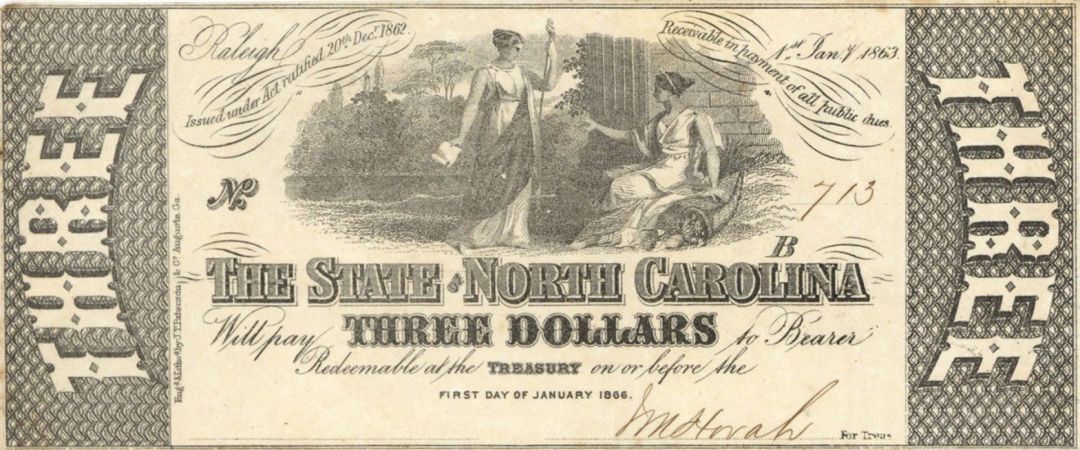State of North Carolina $3 - 1863 dated Raleigh, NC Obsolete Note - Civil War Dated
Inv# OB1458 Paper Money$3, CR-125. North Carolina formally withdrew from the Union on May 20, 1861, amid the American Civil War. Following the outbreak of hostilities, Governor Zebulon Baird Vance initiated the construction of fortifications around the city to defend against Union forces. As the conflict neared its conclusion, Governor Vance orchestrated his evacuation to evade capture as Union General William Sherman's troops advanced toward the city. Prior to his departure, Vance conferred with former governors Graham and Swain to draft a letter of surrender for Raleigh, aiming to shield the city from the devastation experienced by other locations at the hands of Union soldiers. On the morning of April 12, 1865, Graham and Swain set out to meet the approaching Federal forces, with plans to return by that evening. However, they did not arrive back due to delays in train service and their temporary detainment by Sherman’s forces. Consequently, Governor Vance departed the following evening, leaving a letter that granted Mayor William H. Harrison the authority to surrender the city. On April 13, Mayor Harrison, accompanied by others, traveled to southern Wake County to negotiate surrender with General Hugh Judson Kilpatrick. Kenneth Rayner, a long-standing resident of Raleigh, presented the proposal, which included a commitment to refrain from resistance. Kilpatrick consented to the surrender and assured the protection of Raleigh from destruction. Subsequently, Kilpatrick's cavalry took control of Raleigh, replacing the state capitol's flagpole with a United States Flag atop the dome. Sherman arrived shortly thereafter and established his headquarters in the governor's mansion. The city largely avoided extensive damage during the war. As Confederate cavalry retreated westward, Union soldiers pursued them, culminating in the Battle of Morrisville in the vicinity.











Ebay ID: labarre_galleries